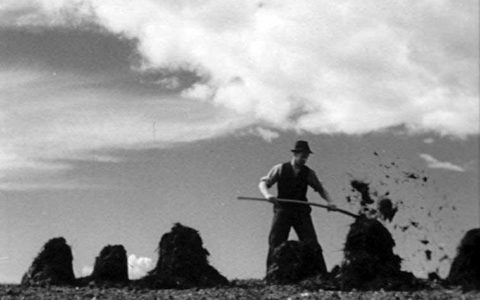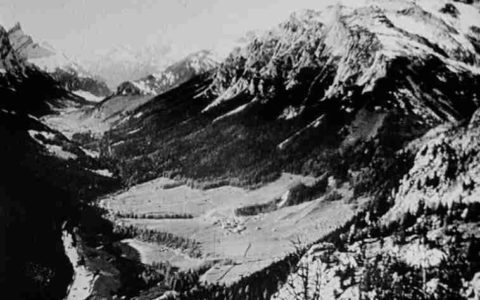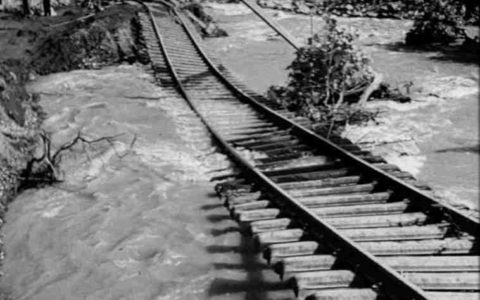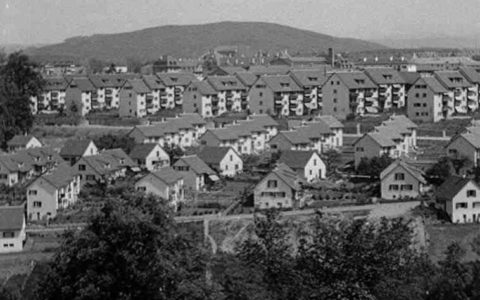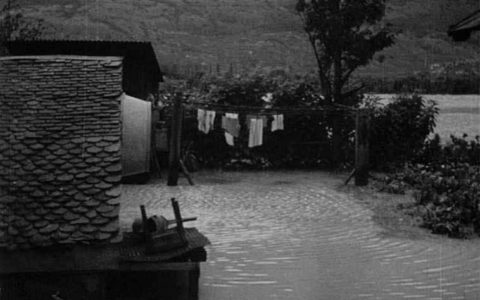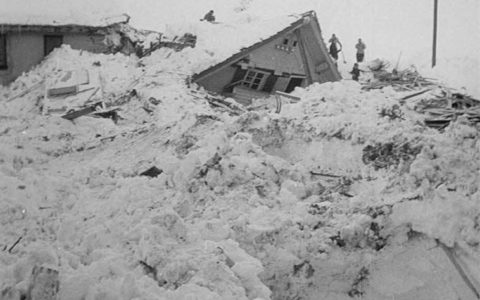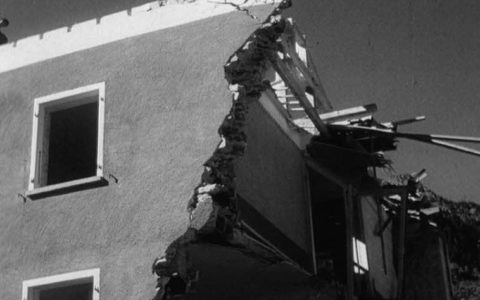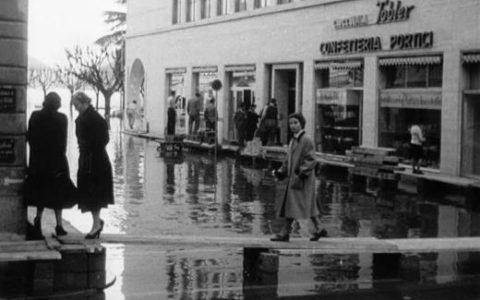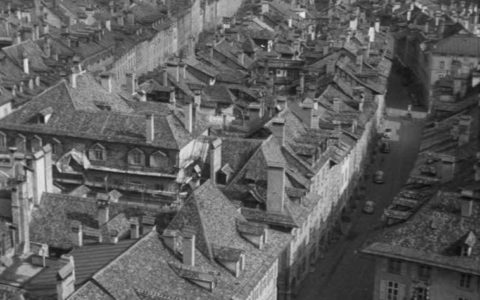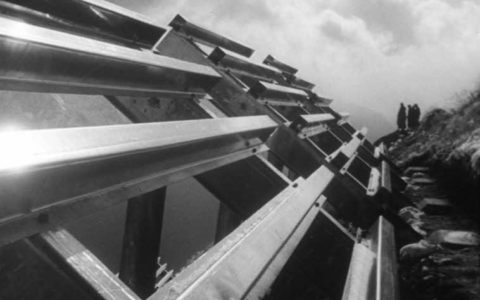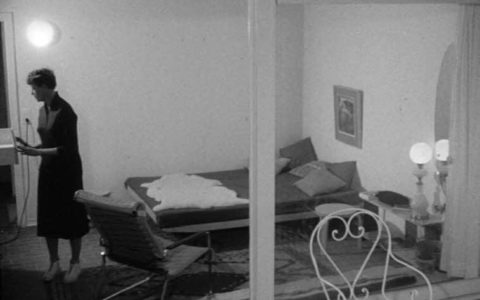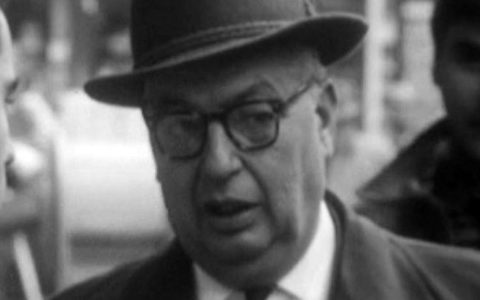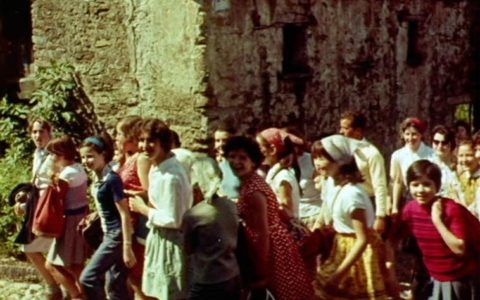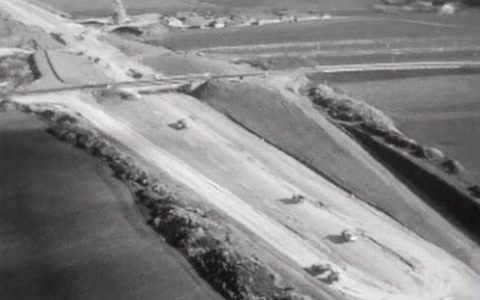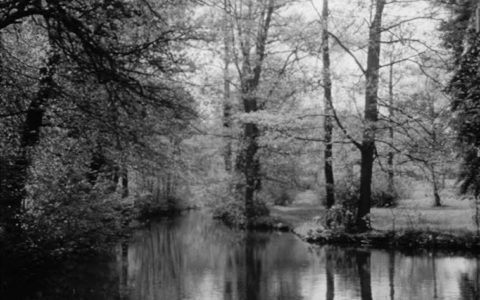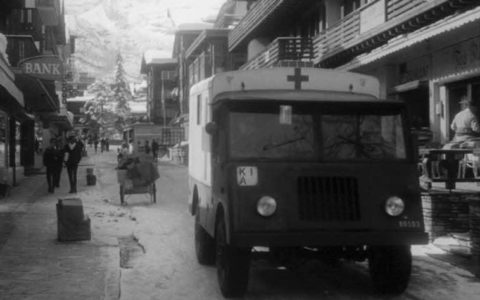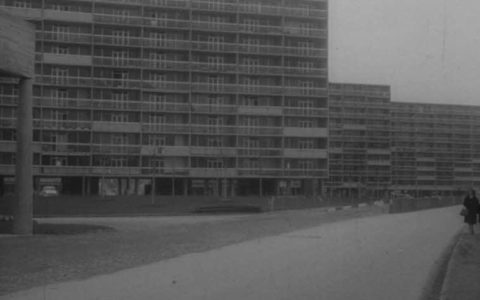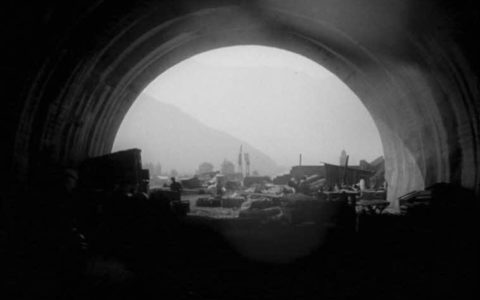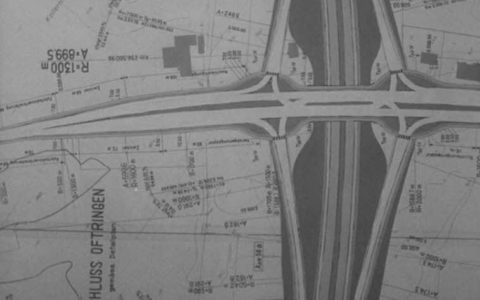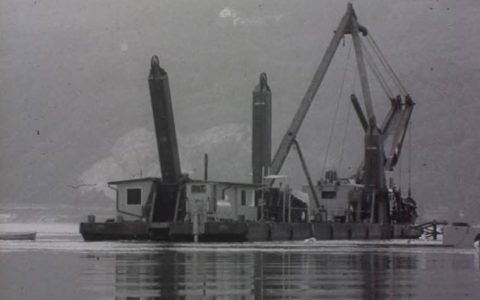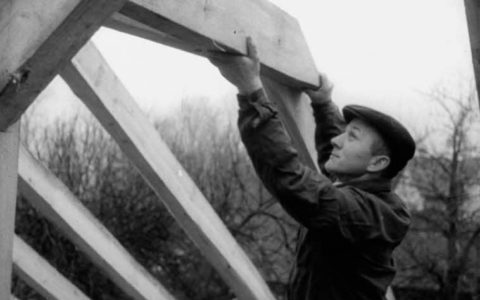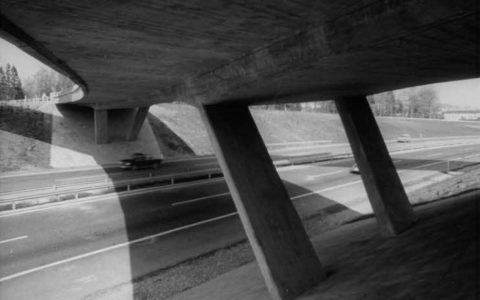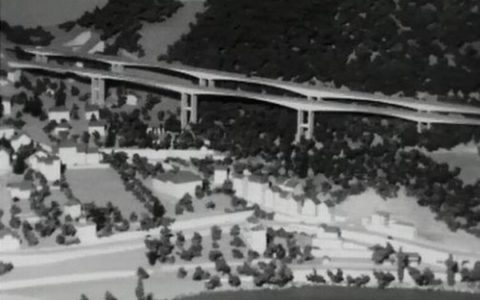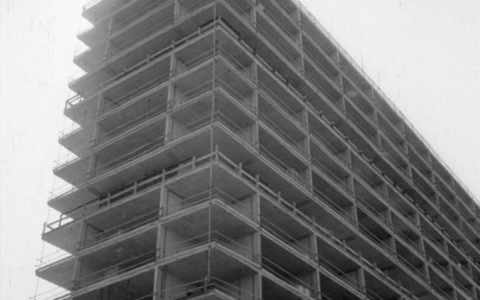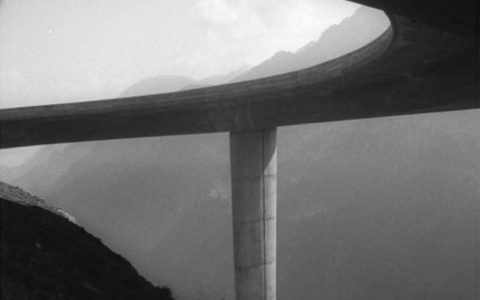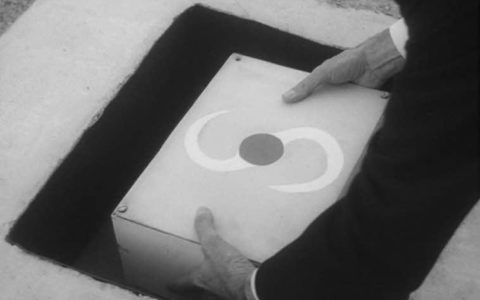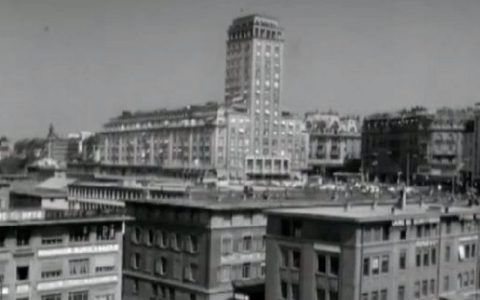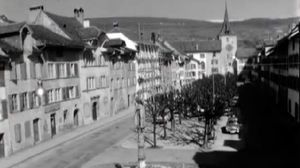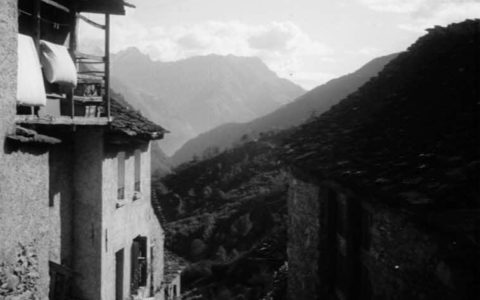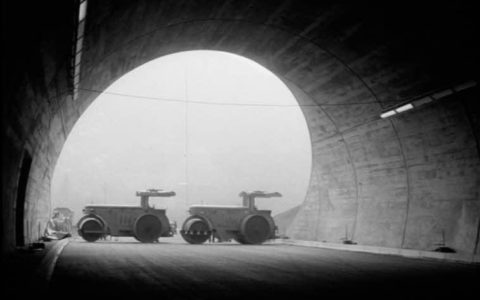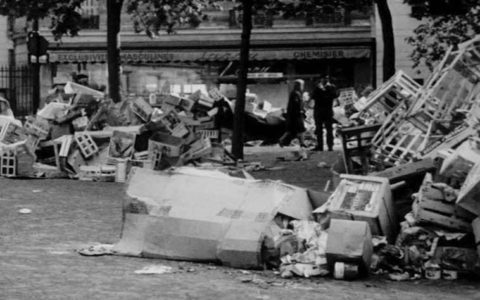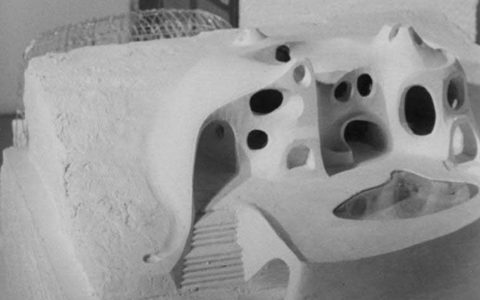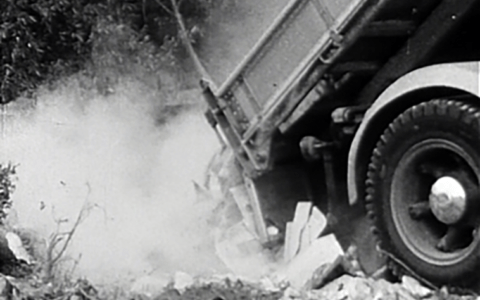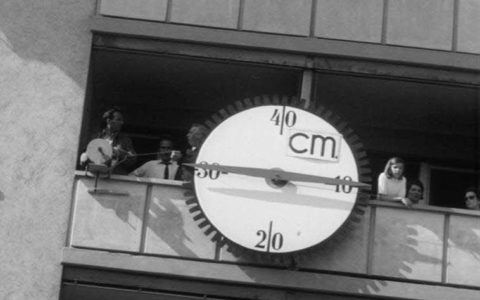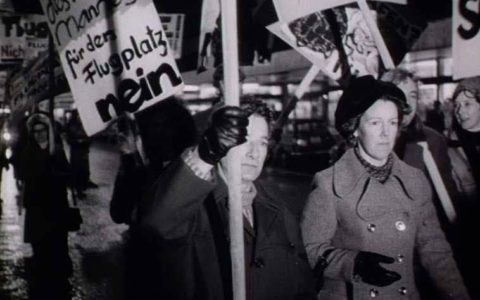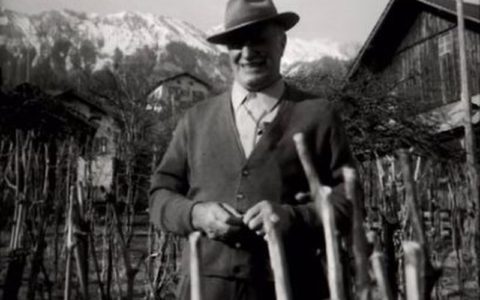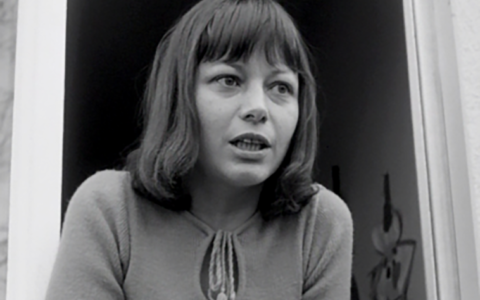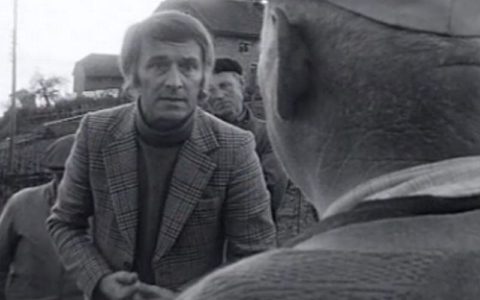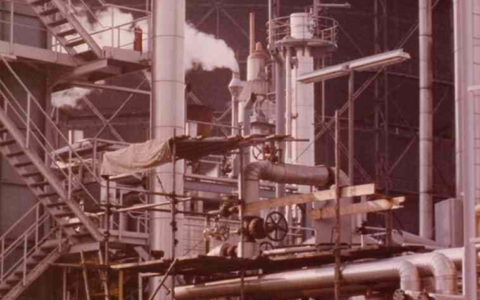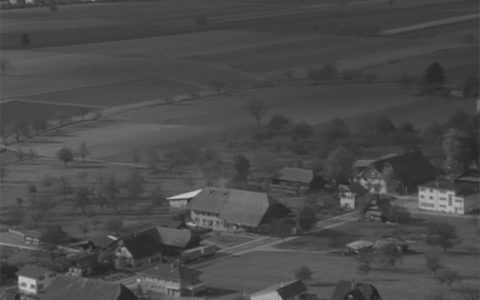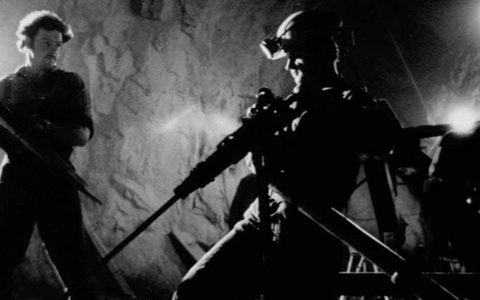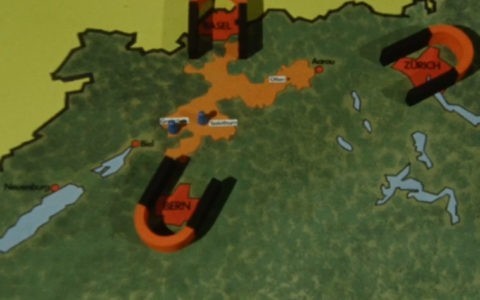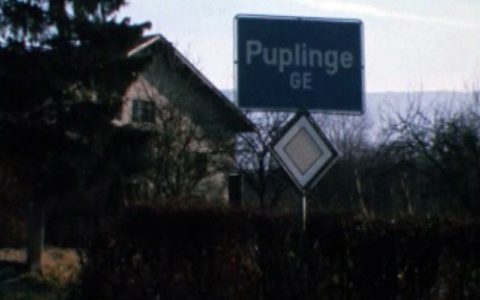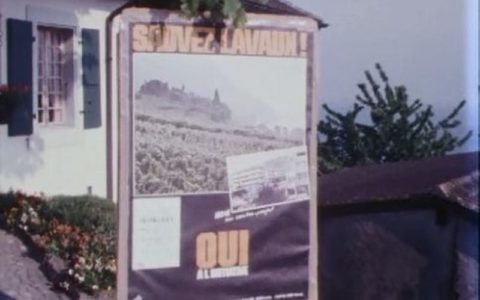Kindly supported by
Historical Films on Spatial Development in Switzerland
Portrait of Swiss Farm Houses
19410121The content of the film is only available in German and French.
Interventions in the landscape and townscape caused people to resist early on. In 1905, the Swiss Heritage Society was founded. Raising the awareness for the wealth of the country as to peasant arts & crafts and building crafts was considered part of the Geistige Landesverteidigung, the spiritual national defence.
The Wahlen Plan
19410516The content of the film is only available in German and French.
During the Second World War, the so-called Wahlen Plan provided for the expansion of agricultural land to 500,000 hectares to secure the food supply. The minimum area of crop-rotation land established in 1992 in accordance with the respective Federal order amounts to 438,560 hectares.
50th Anniversary of Brown Boveri (BBC)
19411024The content of the film is only available in German and French.
In the last three decades previously, a lot of industrial sites had become available in Switzerland, some of them in central locations. As the example of BBC shows, these sites were only accessible to employees. By the time of the 50th anniversary, they were “new” urban neighbourhoods.
The Rheinwald Dam
19440331The content of the film is only available in German and French.
Power-plant projects came into conflict with landscape conservation early on. In the 1940s, the villages of Splügen, Medels, and Nufenen were scheduled to be flooded to allow for the construction of the Rheinwald Dam. However, the local population successfully resisted these plans.
The Linthal Floodwaters
19441110The content of the film is only available in German and French.
The Linth Plains have repeatedly been plagued by severe flooding – most recently in 2005. In order to avert the constant danger of flooding, intensive work has been carried out on the Linth Canal ever since 2008. The so-called Hazard Map shows what hazards affect a specific area.
The Wyler Estate, Bern
19480528The content of the film is only available in German.
By the end of the Second World War, people increasingly moved to the cities. Living space was in short supply, and cities suffered from a severe housing shortage. A lot of co-operative housing projects were developed – including village-type housing developments combining affordable single-family homes with blocks of flats.
The Valais Floodwaters
19480910The content of the film is only available in German.
In Switzerland, floods regularly destroyed settlements, industrial plants, and agricultural lands. Whole plains were threatened by flooding. To remedy the situation, water corrections were made and flood-control structures erected.
The Avalanche Winter of 1951
19510127In the winter of 1951, 91 people died in avalanches – numerous houses, facilities and, in some cases, entire parts of a village were destroyed. Made aware of the dangers by these events, measures were initiated to protect the population: firstly, shelters were built and an avalanche forest established – and from 1960, hazards were mapped.
Severe Weather Hits the Calanca Valley
19511005In the 1950s, the Calanca Valley was marked by hard work and poverty. Natural hazards plagued the valley – including landslides that destroyed buildings.
Floods in the Ticino
19511123The snowmelt following the avalanche winter of 1951 led to high waters in the Ticino and the Engadine that destroyed houses and the infrastructure.
The Historic Centre of Bern
19540312The content of the film is only available in German and French.
After the Second World War, people looked for comfort instead of tradition. To make room for new buildings, some towns even wanted to demolish their historic town centres – including Bern.
Avalanche Barriers
19541015After the avalanche winter of 1951, protective measures were taken against avalanches all through the 1950s. Avalanche forests and shelters were built to avert much dreaded dangers and death.
The Halen Housing Estate
19600129At the beginning of the 1960s, the Halen housing estate was built in a forest clearing near Bern. Halen was built using a construction method focussing on structural density and designed as a communal housing estate intended for families.
Land Speculation
19601208The strong increase of settled areas after the end of the Second World War led to an overheating of the land market in the 1960s. In 1963, the Social Democratic Party SP and the Swiss Federation of Trade Unions submitted the so-called “land-rights initiative” (rejected in 1967). The Federal Act on Measures to Promote Housing of March 19th, 1965, conferred new tasks on the Confederation, among them the promotion of an “suitable long-term settlement” of the country.
The Magadino Plain
19610616At the end of the 19th century, a water correction took place in the Ticino, and the Magadino Plain was able to develop from marshland into an intensively used agricultural area. In 1974, the Bolle di Magadino Nature Reserve was created. In the following decades, the settled area began to penetrate further and further into the plain.
National Roads
19611116From 1954 till 1959, national roads were beginning to be planned. The first section – between Lausanne and Geneva – was opened in 1963 in view of the organization of the Expo ’64 in Lausanne. Switzerland wanted to present itself with a modern transport infrastructure at the Landesausstellung, its national exhibition.
Nature Conservation
19620518In the 1960s, “gems of the Swiss landscape” were increasingly caught up in the maelstrom of potential builders and speculators. Measures were sought to curb rising land prices, and the population was made aware of the need to protect the landscape in order to preserve it for posterity.
Typhoid Fever in Zermatt
19630405The typhoid epidemic of 1963 was caused by contaminated drinking water. As a result, Switzerland introduced a ban for construction projects that were outside the scope of general sewerage projects.
Satellite Town Meyrin (GE)
19630719The need for additional housing space that had existed since the 1940s also led to new concepts of housing development in Switzerland and, in Meyrin, to an entire satellite town being built.
Construction of the Swiss National Roads
19630920In Switzerland, national roads were planned from 1954 till 1959 – quite late by international standards. The first section of the new motorway network was inaugurated just in time for the opening of Expo’ 64 in Lausanne.
Men and Planning
19631004The village landscape as the very emblem of a safe personal biography slowly disappeared, towns grew endlessly and traffic ate up the landscape. “Plan wherever planning is still to be done” became the motto – because land-use planning had started later in Switzerland than in other European countries.
Jura Water Correction
19631101Between 1962 and 1973, the second Jura Water Correction was carried out to prevent recurrent and catastrophic flooding.
Private Residential Building
19640124The housing shortage of the 1960s was a topic that was observed with great attention and also was of great political concern. In 1965, the Federal Act on Measures to Promote Housing Construction was enacted. Among other things, the Delegate for Housing Construction advocated setting up Swiss national land planning.
A1 Lausanne – Geneva
19640501The inauguration of the motorway section between Lausanne and Geneva took place just in time for Expo ’64. The event was celebrated as a “great day for motorized Switzerland”. However, the construction of national roads did not really take into account the spatial impact of the new infrastructure on junctions: what led to a “gold-rush mood” in some places, triggered bitter resistance against the planned traffic lines in others, e.g. in Faido (TI).
The Construction of the A9
19650108The construction of the national road network mainly took place between 1965 and 1975. The realization of the new traffic infrastructure was also considered an aesthetic challenge as road construction always involves interventions in the landscape.
Modular-Type Construction
19650924The housing shortage that prevailed in the 1960s, had new construction methods emerge. Innovative construction techniques based on prefabricated concrete elements were tested to allow building more flats in a shorter time. At the same time, there was a call for spatial planning meeting the demand for new flats to be built in places that made sense from the point of planning.
The A2 and Its Structures
19661028The construction of national roads had to deal with a lot of topographic obstacles. Here, engineering feats came into their own. The new structure was to “perfectly fit into the grand landscape”. However, the impact of the national roads on the spatial structure were largely disregarded in the planning.
The Spreitenbach Shopping Centre
19671027In the 1960s, Zurich’s rapid development began to penetrate as far as the community of Spreitenbach in the Limmat Valley. The former village slowly turned into a part of the Greater Zurich Area. In 1967, the foundation stone for the first Swiss shopping centre was laid here – based on the American model – to supply the new satellite town.
“Flon” – the New Lausanne Neighbourhood
19680527To relieve Lausanne of the increasing car traffic, the former industrial district of Flon was to be redeveloped. A two-tier road system for through and city traffic was planned. However, the plans were never implemented. In recent years, the Flon district has developed into an attractive new neighbourhood of Lausanne.
Le Landeron
19680602In 1963, Shell bought land in Cressier (NE) and, in 1964, began to build a large refinery there that was put into operation in 1966. A Category 3 national road had already been planned in the Cressier area within the scope of the national-road project 1954-1959. The prospect of an easily accessible location boosted the influx of industrial activities into the formerly agricultural area between Lake Bienne and Lake Neuchâtel.
The Blenio Valley
19681101The Blenio Valley is an example of the problems the mountain regions faced in the post-war period: the villages were marked by emigration. Land consolidations were to keep agriculture in the valley. Switzerland was seeking to safeguard the future of its mountain regions.
A2 Lamone-Melide
19681108The construction of the national road system was wholly dedicated to progress: Switzerland was realizing a new road network that promised progress and corresponded to the modern era. However, in the beginning, little thought was spared to the impact on the landscape and settlement structures.
Rising Mountains of Trash
19690613Ever since the 1950s, Swiss municipalities have been confronted with the problem of supply and disposal: rising mountains of trash and increasing amounts of waste water required major investments and a co-operation between municipalities.
What Is Spatial Planning?
19691114The conference „Vereinigung Landesplanung Schweiz” or Swiss Association of National Planning (VLP-ASPAN) found an answer to the question of: „What is spatial planning?” The respective contribution moreover provided an impression of the spatial dynamics prevailing at the time, shaped by the beginnings of suburbanization. Two weeks before the lecture was broadcast on September 14th, 1969, the constitutional article on spatial planning was adopted.
Tele-Shopping
19701127The content of the film is only available in German, French and Italian.
Today, we use the Internet for a lot of our purchases. In fact, the ORL Institute at the ETH Zurich already presented a precursor in the form of teleshopping in 1970.
Link to the archives of Memobase
The Scarcity of Living Space
19710115The content of the film is only available in German, French and Italian.
In the 1960s, there was a housing shortage. People increasingly moved from the countryside to the cities, and the increase of ever smaller households and the influx of foreign workers outnumbered the newly created housing. Innovative projects were being developed to remedy the situation.
Landscape Conservation
19710415The content of the film is only available in German.
The Swiss Foundation for Landscape Protection was founded in 1970 by Pro Natura, Swiss Heritage Protection, the Swiss Association for National Planning, the Swiss Alpine Club and the Swiss Tourism Association. In 1972, the Federal Decree on Urgent Measures in the Field of Spatial Planning was adopted, requiring the designation of provisional protected areas.
Relocation of a Residential Building
19710423The A2 motorway connecting Switzerland to Germany was routed through the northern neighbourhoods of Basel – houses had to be demolished to make room for the motorway. Meanwhile, the motorway has been placed underground and this upvalues the urban neighbourhoods.
The Grosses Moos Airport
19720310The content of the film is only available in German, French and Italian.
The Grosses Moos area had been intensively cultivated ever since the Jura water corrections. Grosses Moos is one of the largest plains in Switzerland and, thus, had become the locale of several projects requiring large areas of land – including a continental airport (1945–72) and, in Galmiz, a major industrial site (2005); however, neither project was realized.
Go or Stay?
19720319In 1972, the authors of this report asked landowners of the municipality of Savièse near Sion in the Canton of Valais whether they had ever sold or would sell land – and why. This contribution reflects the situation of the inhabitants of a mountain village faced with a dilemma: are they to stick to agriculture or open up to new sources of income?
The crisis of the Swiss City
19720508The content of the film is only available in German.
At the beginning of 1960s, a marked out-migration of people from Zurich began, which lasted until the 1990s, as new living space was created on a grand scale in the Limmat Valley and Glatt Valley.
Surlej
19720601In 1965, a construction consortium planned to develop the village of Surlej in the Upper Engadine lake district into a town of roughly 25,000 inhabitants. The project was prevented by the resistance organized by the Pro Surlej association. The statement by an Engadine inhabitant shown here is an excerpt from a longer report.
A Modern Industrial Landscape
19720929The content of the film is only available in German, French and Italian.
The rising prosperity emerging in the course of the economic miracle lasted until the oil shock of 1973: rising consumption as well as increasing space and energy consumption were changing the landscape.
The Wiggertal Regional Planning
19721107The content of the film is only available in German.
The contribution on Wiggertal provided insights into the work of regional planning before the introduction of the Federal Act on Spatial Planning.
The Gotthard – a Natural Obstacle
19730823The content of the film is only available in German, French and Italian.
The Gotthard has been the site of several major tunnel projects: the construction of the Gotthard railway tunnel, the Gotthard road tunnel, and the NEAT presented engineers with major challenges. Each of the tunnels shortened the travelling time between the north and the south.
Decentral Concentration
19741024The content of the film is only available in German.
Since the 1950s, Switzerland had been pursuing a strategy of “decentral concentration”. In 1965, the ORL Institute of the ETH Zurich was commissioned to develop models and leitmotifs for the settlement of Switzerland. By 1971 they were available and were, later on, merged into the so-called CK-73.
A Village Turns into a City
19750126After the Second World War, more and more villages were subjected to “settlement pressure” as a result of economic and urban growth. Small villages become agglomeration communities. The contribution shed light on the situation before the Federal Act on Spatial Planning came into force.
Joint Planning
19751125The content of the film is only available in German.
In his speech, Federal Councillor Furgler pleaded for a responsible co-operation between private investors and the public authorities in the field of spatial planning.
Back to a Healthy Amount
19760508The content of the film is only available in German.
On June 13th, 1976, a referendum was held on the first draft of a Federal law on spatial planning. The draft law was rejected.
Lavaux
19770606This programme was broadcast a scant week before the vote on the Volksinitiative, the popular initiative to protect the Lavaux region, launched by environmentalist Franz Weber. Thanks to this initiative, the Lavaux region has been protected by the Vaud Constitution since 1977. In May 2007, the Lavaux region was added to the UNESCO World Heritage List.
New Version of the Law
19770922The content of the film is only available in German.
In 1976, the first draft of a Federal law on spatial planning was rejected by the people. The Delegate for Spatial Planning, Marius Baschung, explained the differences between the first draft and the subsequent work on a second draft, which came into force on January 1st, 1980.

